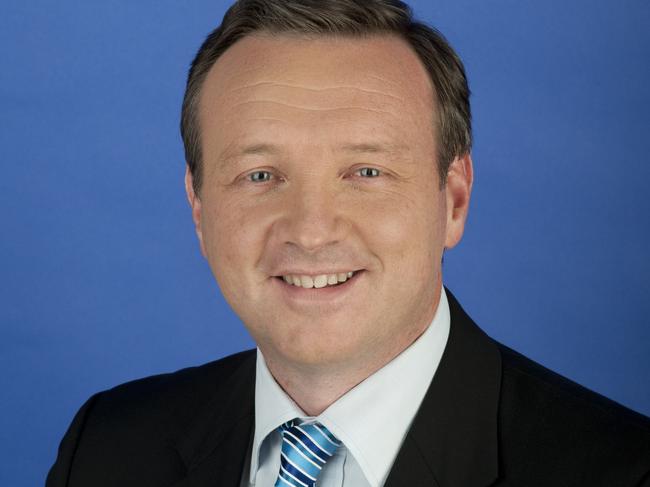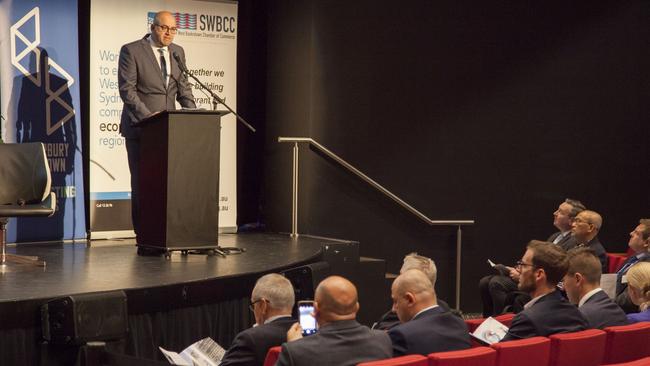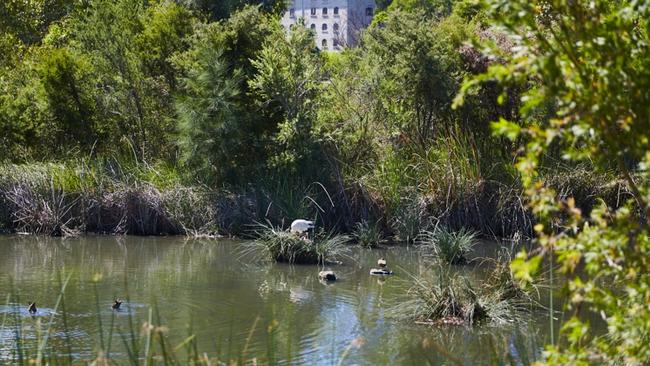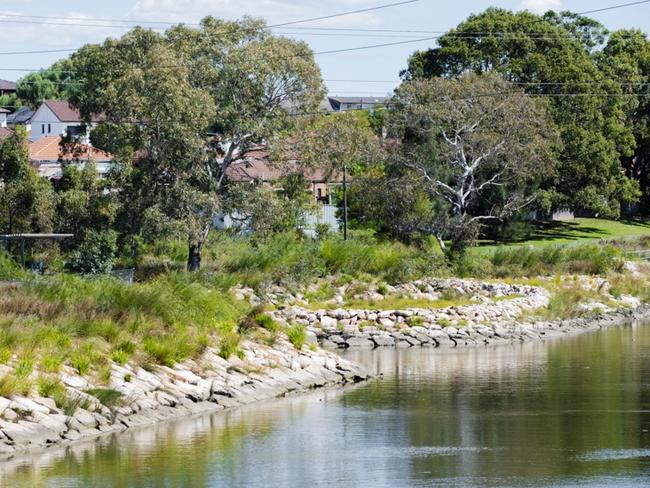Chamber bid to bring SBS to Bankstown will have huge benefits
WESTERN Sydney Business Chamber is championing multi-cultural broadcaster SBS to move to Bankstown saying it will be a win-win for both sides.

The Express
Don't miss out on the headlines from The Express. Followed categories will be added to My News.
WESTERN Sydney Business Chamber is championing SBS to move to Bankstown or western Sydney saying it will be a win-win for both sides.
Chamber director David Borger. said by moving to Bankstown or Liverpool, SBS — which is based in Artamon — will have access to a huge range of talent pool.
He has made known his views to the SBS CEO Michael Ebeid via a letter where he says: “We believe SBS has an opportunity to make a bigger difference by physically locating in the multicultural heartland of Australia.”
Western Sydney Assistant Vice Chancellor Dr Andy Marks agreed, saying Bankstown will be a perfect host for SBS.

The ideas were mooted at the State of the Cities-Bankstown forum, hosted by the chamber at Bryan Brown Theatre, Bankstown, last Thursday.
The forum attracted representatives of stakeholders, including Mayor Khal Asfour, Sydney Water’s Paul Higham, Dr Marks and PwC’s Jeremy Thorpe, who all gave different insights and their views of Canterbury Bankstown’s future.
“In the UK, the BBC packed off significant departments programs to Salford in Manchester in the north of England and SBS could move here because most of its audience live in this area and western Sydney,” Mr Borger told the Express.

“SBS can sell its property in Artamon and build it here because property in Bankstown is cheaper.”
Mr Borger. said being in the heart of Bankstown will be beneficial to SBS because of the “unbelievable range of cultures here”.
Mr Borger, in his letter to SBS boss Michael Ebeid, said a move here will be in line with the government’s strategy to generate more activity in western Sydney.
“We would like to suggest that SBS as the nation’s pre imminent multicultural broadcaster
should be based in Western Sydney,” Mr Borger wrote.
“There are a number of large city centres, including Parramatta, Bankstown and Liverpool that have excellent and improving transport links and significant new investment in commercial offices, civic infrastructure and new retail.
“This would provide SBS with a talent pool, allow the broadcaster to be physically located
closer to its audience, and have the added benefit of stimulating activity in one of the city
centres of Western Sydney.”

The bold move to bring the SBS broadcaster here coincides with a proposal from Western Sydney University to move the Bankstown Lidcombe hospital into their new campus.
“Bankstown would be an ideal home for a broadcaster like SBS,” Dr Marks said.
“It is one of Australia’s most culturally and linguistically diverse areas and an incredibly vibrant and modern city, one that is rapidly growing.
“It makes sense for any broadcaster to choose Western Sydney as a place to base operations.
“Site costs are much lower than those in cities like Sydney, plus a large share of the media workforce already live here.
“Also, this is the region where elections are decided, where the largest concentration of business operate, and the lions share of population growth is occurring.
“Western Sydney University students and researchers in fields like communications, languages, linguistics, media and creative industry are ideally placed to work alongside SBS or any major broadcaster that chose to take up the opportunity.”

Cr Asfour, who has said before that the Sydney Metro Southwest in its present structure is unsuitable for the city, told the audience that by moving the station underground, it will create a massive new prime city centre.
He pointed point out that Canterbury Bankstown is home to 32,000 businesses — the second largest in the state and produce more than $15 billion in output annually.
“The universities, hospitals and private sector understand what Bankstown is about and they’re opting in,” Cr Asfour said.
“The only thing needed now is a way of pulling it all together so the design of Bankstown railway station is key.
“Improve the design — even marginally — and you create a central spine running through Bankstown all the way to Parramatta, and setting the stage for the big North-South rail line flagged for next decade.
”Go one step further and underground the station, and you not only resurrect a functional grid for the city, you unlock 55 hectares of prime city centre land and 1.5 million square metres of new urban form.”
Canterbury Bankstown Council General Manager Matthew Stewart said the Sydenham to Bankstown Metro, “is connecting us from an employment and education perspective to jobs growth here”.
What many of you won’t know is that Bankstown is closer to Sydney city than Parramatta,” Mr Stewart said.
“We cannot let two suburban railway stations be built in the middle of town.”
“We need to make sure the metro is transforming and enabling the innovation corridor and the jobs growth…And the way to do that is to get a better design and a better interchange.”
Mr Thorpe, the PwC chief economist, also said it is time to link the city together.
“Speaking of the Bankstown rail line cutting the city centre in half, time to bring down the Berlin Wall,” Mr Thorpe said.

“Bankstown is on the cusp on a significantly better score for live and play.”
“Better connectivity can result in better outcomes on the live and play characteristics,” Mr Thorpe said.
“The City Pulse analysis demonstrates there is a clear correlation between transport infrastructure investment and higher scores for live, work and play.”
“Bankstown has a higher productivity than Liverpool.
“We know from City Pulse scores that fast and reliable transport infrastructure is critical to the development of city centres.”
“But transport is not enough. A critical element of growing a precinct is the concept of discovery hubs — universities, hospitals, research centres.
He said a modern and vibrant connected population are a catalyst for high economic growth.
“The Bankstown Lidcombe Hospital, there is a foundation here for the next stage of investment,” Mr Thorpe said.
“To really become a driver of economic value, this (the hospital) needs to be more than a carbon copy of Westmead or Liverpool.
“The critical factor is that it needs to have something that is truly world-class and a narrow specialisation.”

Sydney Water’s Head of Service Planning and Asset Strategy, Paul Higham highlighted their commitment to contributing to the ‘blue green’ grid of the future within the Canterbury Bankstown area.
The Blue-Green grid is part of the Greater Sydney Commission’s vision, including a ‘green grid’ of interconnected networks of open space founded on the ‘blue grid’ of waterways and watercourses that thread throughout Greater Sydney.
Mr Higham said there are a program of works under way to achieve this vision.
“As Western Sydney develops, greening the city and protecting the existing natural areas is critical – for people to have cool, natural and beautiful areas to live, play and work,” Mr Higham said.
“Water is an essential part of Sydney’s magic. We live in a city whose international brand is defined by water.”
Since 2015, Sydney Water has worked with Canterbury Bankstown Council, the Cooks River Association, the Cooks River Valley Association, Mudcrabs, and the Georges River Combined Catchment Committee to deliver and plan for river naturalisation and water sensitive urban design projects.
At Cooks River, three sites were naturalised in 2015 in the Canterbury Bankstown Local Government Area. This included transforming the old 1930s concrete panels along the channel into gently sloped river banks that are stabilised with sandstone, along with planting more than 80,000 local native plants.
This work also involved building the Cup and Saucer Wetlands, which is now a haven for birdlife and a prized local education resource.
Sydney Water is also working to remove gross pollutants in the Cooks and George’s River, after installing litter booms at three locations.

